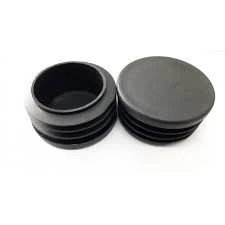Mobile:+86-311-808-126-83
Email:info@ydcastings.com
Pump Hose Attachment for Seamless Compatibility and Enhanced Efficiency in Fluid Transfer
Understanding Pump Hose Connectors
Pump hose connectors are essential components in various industries that rely on fluid transfer systems. These connectors play a crucial role in linking hoses to pumps and other equipment, ensuring efficient and secure fluid movement. This article aims to delve into the significance of pump hose connectors, their types, materials, and applications, as well as best practices for their use and maintenance.
Importance of Pump Hose Connectors
The primary function of a pump hose connector is to create a safe and leak-proof connection between a pump and the flexible hoses that transport liquids. Whether in agricultural irrigation systems, industrial manufacturing, or water transfer applications, the reliability of these connectors directly impacts operational efficiency. A secure connection prevents fluid leaks that not only waste resources but can also pose environmental hazards. Thus, understanding and selecting the appropriate connector is crucial for any fluid transfer system.
Types of Pump Hose Connectors
Pump hose connectors come in various types, each designed to meet specific needs
1. Camlock Connectors These are commonly used in the agricultural and industrial sectors. They feature an interlocking mechanism that allows for quick connections and disconnections, making them ideal for situations where hoses need to be switched out frequently.
2. Threaded Connectors These connectors involve male and female threads, providing a secure and permanent attachment. They are often utilized in applications requiring a strong hold under pressure, such as in industrial machinery.
3. Barbed Connectors Barbed connectors are designed for use with flexible hoses. Their barbed ends grip the interior of the hose, ensuring a tight fit. They are often used in lower-pressure applications, such as garden irrigation systems.
4. Quick-Connect Fittings These are designed for ease of use, allowing users to connect and disconnect hoses without the need for tools. Quick-connect fittings are popular in scenarios where fast assembly and disassembly are essential.
Materials Used in Fabrication
The choice of material for pump hose connectors significantly impacts their durability and suitability for various applications. Common materials include
- Plastic Lightweight and resistant to corrosion, plastic connectors are often used in agricultural applications and for transferring non-chemical fluids.
- Aluminum Known for its strength-to-weight ratio, aluminum connectors are commonly used in industrial settings
. They provide corrosion resistance and can withstand higher pressures.pump hose connector

- Stainless Steel For demanding environments where corrosion resistance and strength are crucial, stainless steel connectors are preferred. They are often found in food processing, chemical manufacturing, and marine applications.
Applications
Pump hose connectors are utilized across a wide range of applications including
- Agriculture Used in irrigation systems where water needs to be transferred from pumps to irrigation hoses. - Construction Essential for the transfer of water or concrete in construction sites, ensuring efficient fluid management.
- Manufacturing Vital in various industrial processes where precise fluid movement is necessary for production lines.
- Chemical Processing Used to securely handle potentially hazardous fluids, ensuring safety and compliance with regulations.
Best Practices for Use and Maintenance
To ensure the longevity and effectiveness of pump hose connectors, follow these best practices
1. Regular Inspection Periodically inspect connectors for any signs of wear or damage. Replace any components that show signs of fatigue or leakage to prevent accidents.
2. Proper Installation Ensure connectors are installed according to manufacturer guidelines. Tightening should be done carefully to avoid over-tightening, which can lead to cracks.
3. Cleaning Clean connectors before storage or switching between different fluids to prevent contamination and maintain hygiene, especially in food processing applications.
4. Temperature and Pressure Limits Always consider the operating temperature and pressure limits of both the hose and the connector to avoid failure.
In conclusion, pump hose connectors are vital components in fluid transfer systems across multiple industries. Understanding their types, materials, and correct usage ensures optimal performance and safety in any fluid handling application. By following the outlined best practices, users can maintain the integrity and function of these connectors, thereby enhancing the efficiency of their operations.
-
Why Should You Invest in Superior Pump Castings for Your Equipment?NewsJun.09,2025
-
Unlock Performance Potential with Stainless Impellers and Aluminum End CapsNewsJun.09,2025
-
Revolutionize Your Machinery with Superior Cast Iron and Aluminum ComponentsNewsJun.09,2025
-
Revolutionize Fluid Dynamics with Premium Pump ComponentsNewsJun.09,2025
-
Optimizing Industrial Systems with Essential Valve ComponentsNewsJun.09,2025
-
Elevate Grid Efficiency with High-Precision Power CastingsNewsJun.09,2025











